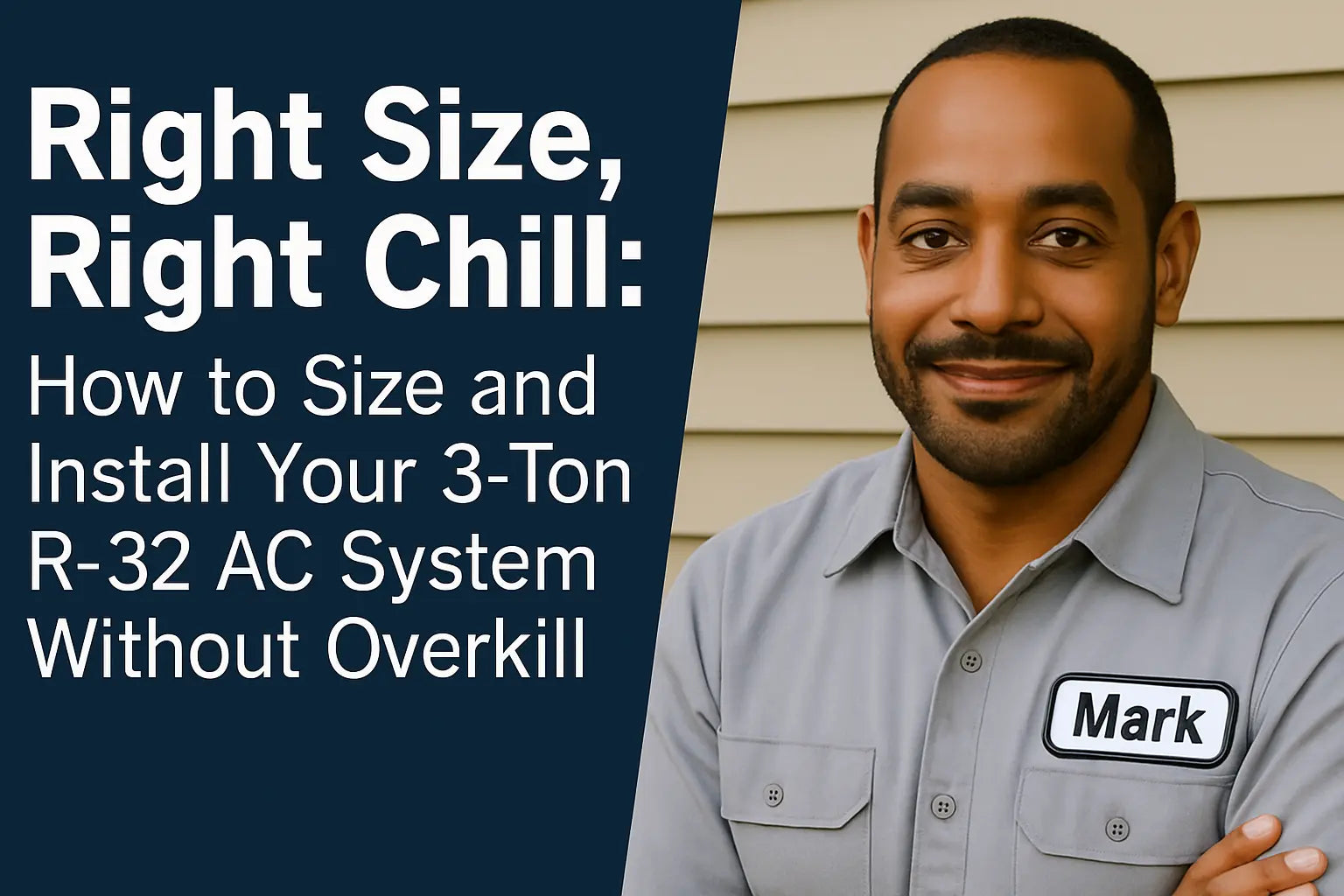🔥Mark’s No-Nonsense Start
Alright, let’s cut through the confusion right away. I’m Mark — your straight-shooting HVAC guy with years of hands-on experience. I’ve seen too many folks jump into buying and installing an AC system thinking bigger is always better. Spoiler alert: it’s not. Oversizing your 3-ton R‑32 air conditioner won’t just hurt your wallet; it can mess with your comfort, efficiency, and the lifespan of your system.
So if you want to save money, avoid headaches, and stay cool the smart way, stick with me. We’ll walk through how to size your 3-ton system correctly, prep for installation like a pro, and get that R‑32 beast humming just right. Plus, I’ll weave in links to some solid resources, so you’re not flying blind. Ready? Let’s roll. 🧰❄️
📏 How to Size Your AC System: Why 3 Tons Might Be Just Right
First things first — what does “3 tons” even mean in air conditioning? A “ton” here isn’t about weight; it’s about cooling power. One ton equals 12,000 BTUs per hour, so a 3-ton system cools roughly 36,000 BTUs per hour.
When is a 3-ton system ideal?
Typically, a 3-ton AC is best suited for homes around 1,500 to 2,100 square feet, depending on insulation, climate, and ceiling height. But square footage alone doesn’t tell the whole story.
Why not just pick the biggest unit?
Oversizing leads to short cycling — where the AC turns on and off rapidly — which wastes energy, stresses the compressor, and leaves you with inconsistent temperature and humidity control. Plus, you’ll see higher utility bills and premature wear.
The Department of Energy explains that properly sized AC systems run longer, maintain consistent comfort, and use energy more efficiently.
How do you calculate your needs?
Load calculations factor in:
-
Square footage
-
Home orientation and window size
-
Insulation quality
-
Occupant count and appliances
-
Local climate and humidity
Professional HVAC contractors use a detailed Manual J calculation for precise sizing. If you’re shopping on your own, a good ballpark is about 20 BTUs per square foot in moderate climates.
🏠 Why R‑32 Is the Refrigerant to Choose
You’ve probably heard R‑32 called “the future” of home AC refrigerants — and with good reason. Compared to R‑410A, R‑32 has a Global Warming Potential (GWP) of just 675, compared to 2088 for R‑410A, making it much more environmentally friendly.
The Environmental Protection Agency notes that R‑32 is mildly flammable (A2L classification), so proper handling and installation are critical. But when installed right, R‑32 systems are highly efficient, easier to recycle, and aligned with tightening environmental regulations.
🛠️ Installation Prep: Setting the Stage for Success
Location, location, location
Pick a spot for your condenser with good airflow, at least 2 feet clearance on all sides, and away from direct sunlight if possible. A shaded area helps boost efficiency.
Make sure the condenser sits on a level, vibration-isolating pad. Concrete pads or prefabricated bases work great.
Electrical requirements
Your 3-ton R‑32 condenser will need a dedicated 230V circuit with the right amperage breaker. Consult the unit’s specs and local electrical codes, or have a certified electrician handle this part.
The National Electrical Code (NEC) covers these requirements in detail.
Match your system components
For best performance, use matched indoor coils and air handlers designed for R‑32 systems. Check the AHRI Directory for certified matched components.
🔌 Connecting the Lines: Refrigerant and Electrical
Refrigerant lines
R‑32 pressure differs slightly from R‑410A, so make sure your copper line sets are sized and installed to the manufacturer’s specs. Avoid common mistakes like loose flare fittings or insufficient insulation, which can cause leaks or inefficiency.
Vacuum and charge
Pull a deep vacuum below 500 microns to clear moisture and air before charging. Then charge precisely by weight according to specs—no guesswork allowed.
🚦 Testing and Startup: Getting It Just Right
Before firing up, double-check:
-
Leak test all connections with an A2L-rated electronic detector
-
Confirm electrical connections and voltage
-
Turn the thermostat on, watch the compressor and fan cycle
-
Measure superheat and subcooling to verify charge
If you see erratic cycling, strange noises, or poor cooling, pause and troubleshoot before calling it good.
⚠️ Troubleshooting Common Issues with 3-Ton R‑32 ACs
Here are some issues you might face:
-
No cooling or insufficient cooling: Check airflow (clean filters, vents), refrigerant charge, and thermostat settings.
-
Short cycling: Often caused by oversizing or faulty sensors.
-
Strange noises: Rattles might mean loose screws; hums might indicate electrical problems.
-
Ice buildup on coils: Usually low airflow or refrigerant issues.
If you want a deep dive on troubleshooting, HVAC School is an excellent resource.
🧹 Maintenance Tips to Keep Your 3-Ton R‑32 AC Running Smooth
Keep your system efficient and long-lasting with these:
-
Replace or clean filters every 1-3 months
-
Clean outdoor coils seasonally
-
Check and clean drain pans and lines
-
Annual professional tune-up for electrical and refrigerant checks
🔚 Mark’s Final Thoughts
Sizing and installing your 3-ton R‑32 AC right means you get the comfort you want, without wasting money or hurting the planet. Remember, bigger is not always better—correct sizing prevents short cycling, improves humidity control, and extends system life.
If you’re shopping for a system built to modern standards, with R‑32 refrigerant and matched components, check out The Furnace Outlet’s 3-Ton R‑32 residential AC collection. Their units come with warranties and are designed for efficiency and reliability.
Installation is key—if you’re not confident, hire a certified pro, especially for refrigerant handling and electrical hookups. Safety and comfort go hand in hand.
Worried about making mistakes during installation? Visit my guide: Top 5 Rookie Mistakes When Installing 3-Ton R‑32 AC Units — And How to Dodge Them Like a Pro.
Stay cool, keep it right, and you’ll enjoy efficient, hassle-free comfort for years to come. Catch you on the next install! 😎🔧
— Mark, your go-to HVAC tech







